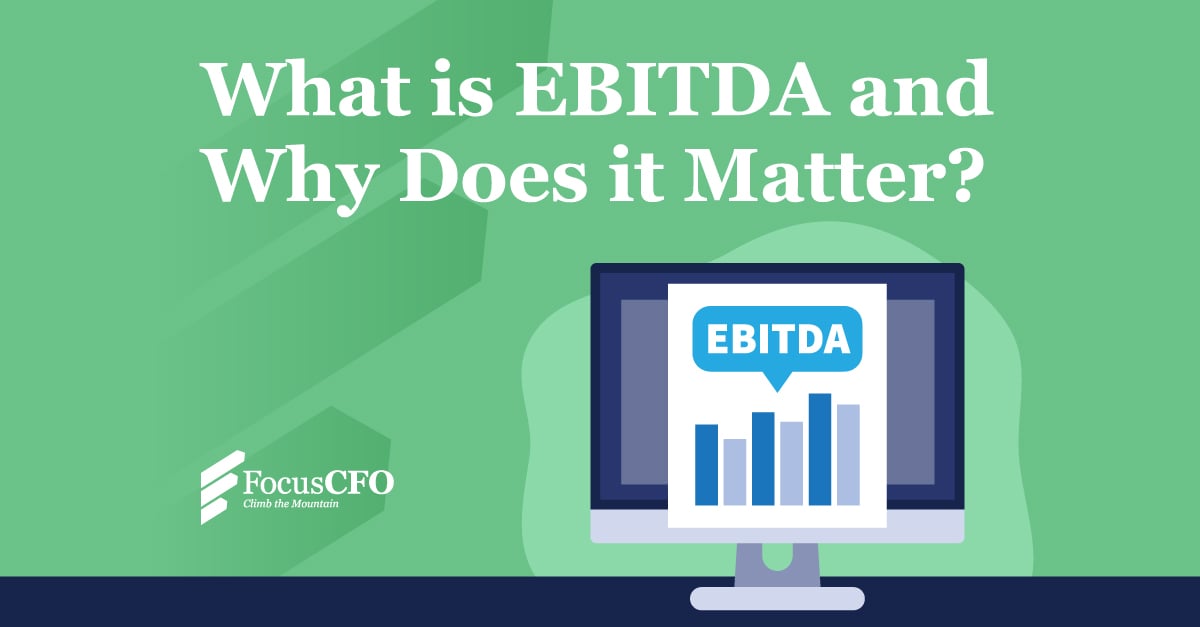If you're a founder thinking about raising capital, prepping for a potential acquisition, or just trying to get a better view of your company’s financial health, you need to know about EBITDA.
More than just financial jargon, EBITDA is a powerful tool for cutting through the noise in your financials and understanding how your business is really performing — especially when you enter into conversations with potential investors or buyers.
In this post, we break down what EBITDA is, how it compares to other metrics, and why it plays a central role in valuation and decision-making.
What is EBITDA? (And What It Isn’t)
EBITDA stands for Earnings Before Interest, Taxes, Depreciation, and Amortization. It’s a financial metric that shows how much money your business makes before the effects of financing decisions, tax environments, and non-cash accounting items. It gives you a clearer view of your company’s operating performance, helping you understand how well your business is running based solely on revenue and core expenses.
For founders and investors, EBITDA is critical because it eliminates any unnecessary information and allows them to make apples-to-apples comparisons across potential opportunities.
EBITDA vs. Net Income: Which Should You Use?
Many business owners look at net income as the bottom-line indicator of success. But, while net income is important, it can be distorted by factors that have little to do with how well your business is operating, including:
- Interest expenses (which depend on your capital structure)
- Tax rates (which vary by location and structure)
- Depreciation or amortization (which are non-cash accounting entries)
EBITDA removes all of that, which makes it a more reliable metric when you’re measuring operational efficiency, comparing your business to others, or considering investment or acquisition opportunities.
Net income, on the other hand, comes into play when you're evaluating profitability after all expenses and when you're preparing financials for tax or compliance reporting.
What Is a Healthy EBITDA Margin for My Industry?
Your EBITDA margin is a quick way to assess how efficiently your business turns revenue into operating profit. You can determine this metric by dividing EBITDA by the revenue of your business.
A "healthy" margin varies widely by industry, company size, and stage of growth, but generally speaking, a good EBITDA margin falls between 15% and 25%. And the higher the margin, the greater the profitability and efficiency of a company.
Industries with lower overhead and higher scalability – technology and software, for instance – may have higher average EBITDA margins. Conversely, industries with more overhead and capital investments, like manufacturing or retail, may have lower margins. So it’s important not to consider EBITDA in isolation.
Want to know how you stack up? A fractional CFO can help benchmark your margin against similar companies in your industry and stage.
Why Buyers and Investors Care About EBITDA
When someone wants to invest in or acquire your business, they’re looking at future earnings potential. EBITDA gives them a standardized way to assess that potential.
First, it offers clean comparisons, allowing buyers to compare businesses regardless of financing structure of accounting quirks. Second, it helps determine business valuation, as many deals are priced as a multiple of EBITDA, especially in private equity. Also, EBITDA serves as a rough estimate of operating cash flow, helping buyers gauge potential returns.
The bottom line: The stronger and more stable your EBITDA, the more attractive your business looks to those on the outside.
When EBITDA Can Be Misleading
EBITDA is a helpful lens, but it’s not perfect. For instance, it doesn't account for capital expenditures, which can be significant in asset-heavy businesses. It doesn’t reflect changes in inventory, receivables, or payables, which can affect cash flow. And it is subject to manipulation, which can be exposed during due diligence.
This is where a quality-of-earnings (QoE) review — often supported by a CFO — becomes essential. It validates and “normalizes” your EBITDA to tell the real story.
Moving Forward
EBITDA plays a key role in small to midsize businesses, helping you cut through financial noise, focus on core performance, benchmark intelligently, and position yourself for growth, funding, or sale. It’s one of the most useful tools in the finance toolbox for founders and operators, and if you're not already tracking EBITDA closely, now’s a great time to start.
If you’re planning a raise, acquisition, or strategic shift — let’s talk. A fractional CFO can help you turn your EBITDA story into a competitive advantage.







